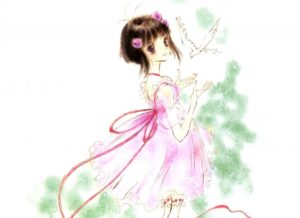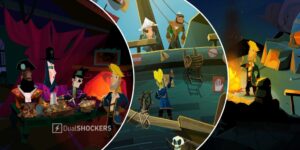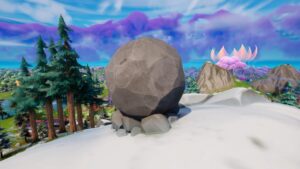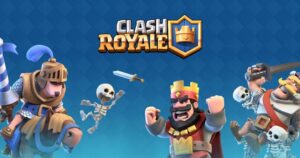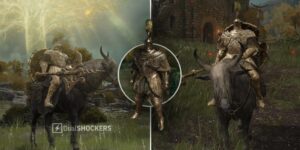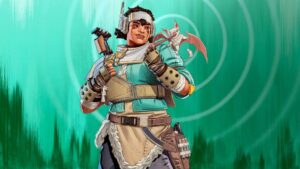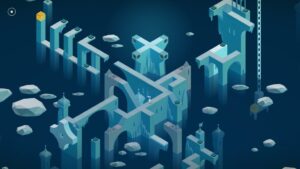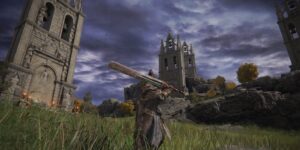| Our Score | 6 / 10 |
| The Good | Remarkably fluid combat and seamless local co-op |
| The Bad | Overpriced and rudimentary port job |
| Release Date | 20 July |
| Developed By | Square One Games, Black Isle Studios |
| Available On | Xbox One/Series, PS4/PS5, Nintendo Switch, PC |
| Reviewed On | PC |
The Baldur’s Gate: Dark Alliance games were a fascinating – and troubled – little patch of videogame history. Arriving in 2001, a time when the once-formidable publisher Interplay was struggling to recapture its former glories, Dark Alliance was an effort to transfer the deep lore and sense of adventure from the Baldur’s Gate PC games into a format palatable to console gamers.
And while today it seems a tad outdated to assume console gamers lack the attention spans of their PC brethren and crave simpler, more action-packed games, it can’t be denied that some interesting games came out of that assumption. The Dark Alliance games were really rather good – simple but technically and mechanically slick hack-and-slashers that were quite possibly the first ever games to move the Diablo loot-em-up formula into full 3D graphics.
Following on from last year’s unexpected multiplatform re-release of the original Dark Alliance comes this re-release of the 2004 sequel. It’s a superior game on most fronts, with a more imaginative roster of playable characters, a less linear world that lets you run off and do side-quests on an overworld map, as well as unique quests and dialogue lines specific to each of the five heroes.
They’re a pleasingly eclectic bunch, these heroes, and include a Drow Monk whose thong is pulled up way too high in that distinctly ‘early 2000s’ way, a sturdily built cleric who may well have been the inspiration for Game of Thrones’ Brienne of Tarth, and – my personal favourite – an Elf necromancer who carries himself with the sulky campiness of a mid-2000s emo teenager. He’s emblematic of a game that shoots for the lowest common denominator of high-fantasy – a story of five strangers who are brought together to take on a vampire lord intent on taking over Baldur’s Gate through the power of the Onyx Tower. It uses the iconic Forgotten Realms setting, but you can forget about any meaningful lore insights or discoveries, as these games are very much tangential to canon.


The quests are simple, while the locations are an assortment of goblin-inhabited forests, spooky mutant-filled manors, and some places that will be familiar to series fans, like Dragonspear Castle and the city of Baldur’s Gate itself, which acts as the main hub. There’s enough variety in the enemies and locations – even after all these years – that the game remains enjoyable to tear your way through.
There’s a simple progression to the weapons and armour that won’t have you poring over long lists of stats, while the gem-based crafting system lets you do a little bit of fine-tuning to your builds while not turning you into a metagame mega-fiend. Hardcore players of games like Paths of Exile or Diablo may find this unbearably limiting, but for me the simplicity is part of the appeal.
Given that the game is mostly focused around combat, with no options for stealthing or smooth-talking your way through situations, much of the enjoyment is derived from the old swords-and-sorcery itself. Blocks and weapon swings are responsive, and the ability to instantly switch between two separate loadouts makes for a fairly smooth combat flow. There’s some nice stacking possibilities too. The cleric Allessia, for instance, can summon a floating spiritual sword as a companion, which she can beef up with shields and attack buffs. Combine that with her ability that prevents enemies from attacking her unless she attacks them first, and you can use your summon as a tank while you rain fire down from afar or get behind enemy lines and cleave through them with your zweihander.
Most of the fancy stuff – visually and strategically – is confined to spells, which means that playing as a strictly melee character like Dwarven rogue Borador or the barbarian Dorn may eventually lose its sheen due to the relatively simple nature of the melee combat. The sense of impact when you cut down and dismember enemies feels great, but without the variety that comes with spellcraft it only remains engaging for so long. This can be remedied by playing alongside a friend, and it’s perhaps a sad sign of the times that to this day it remains one of the most enjoyable local co-op campaigns that can be played through in its entirety. In a world where ARPGs like Diablo feel overly obsessed with endgame and grind, Dark Alliance 2 feels refreshingly self-contained with its singular campaign. Unlockable characters and higher difficulties extend its appeal beyond its modest 12ish-hour playthrough as well.


Visually, Dark Alliance 2 holds up very well given its age. The Snowblind Engine it was made on may well be one of the most technically impressive of its time. Spells momentarily light up gloomy dungeons and explode into dozens of little particles, water ripples with the thick fluidity of mercury, NPCs you meet in the world are well animated, and there are some impressive fine details; whenever you loot those piles of gold from enemies, for instance each individual coin in that pile is rendered, so if you pick up, say, 12 coins, that’s the exact amount of coins that was lying on the ground!).
It’s a shame then, that seemingly minimal effort went into actually remastering this game for modern platforms. Beyond widescreen support and high-resolution support – features that emulators and modders add to old games with relative ease – there are no visual enhancements here: no improved textures, no upscaled FMV cutscenes, no updated UI to make things like spellcasting a bit less fiddly, no online support, no nothing.
In fairness, the store pages and marketing for Dark Alliance 2 don’t do a big song-and-dance about this being a ‘remaster,’ but they do slip up by calling it ‘remastered’ in the trailer; it’s kind of telling that where most trailers for remastered games would go on to list the most notable things that have actually been remastered, the Dark Alliance 2 trailer does no such thing. Simply put, they really don’t have anything to back up that ‘remastered’ claim. For all intents and purposes, this is a PC port of an 18-year-old PS2 game, which would’ve been fine were it not for the £30/$40 price tag, which is more or less what you would’ve paid for the game back when it first came out.
On a technical level, Dark Alliance 2 has been decent for me, barring a strange bug where the menus registered the controller but in-game it wouldn’t. There have, however, been more serious reports of the game crashing, bugging out, or even breaking, on PC and other platforms. It seems that Interplay is already releasing fixes, but be warned that for the next few weeks at least this game isn’t particularly stable (nor cheap).


It’s a bit of a wasted opportunity that Interplay, which is such a shadow of its former self that you’d have been forgiven for thinking it doesn’t exist any more, didn’t take this momentary spotlight to show the world that they’ve still got a bit of the old magic, that they still care. Dark Alliance 2 was, and largely still is, a very good game, but its impressive underlying tech could’ve really shone had a bit more effort been put into actually modernising it.
There’s value here, for sure, as a visceral stomp through a beloved fantasy world that offers the rare luxury of being entirely playable alongside a friend. It’s swift, slashy, and simple, but comparing it to other games of this era that have been ported to modern platforms – Okami, Resident Evil Remaster, and Silent Hills 3 and 4, to name a few – you’re paying double to quadruple the price. Buying it at this price point feels like it could set a precedent that shouldn’t be supported, tempting though it may be…
- amazon prime gaming
- axie infinity
- Baldur's Gate: Dark Alliance II
- Casino Games
- coingenius
- Dualshokers
- EA Sports
- Evil Geniuses
- Gaming
- gaming headset
- gaming pc
- madden nfl
- Nintendo
- Online casino games
- Originals
- pc games
- plato
- plato ai
- plato data intelligence
- plato game
- plato gaming
- platodata
- platogaming
- playstation
- prime gaming
- Reviews
- Team SoloMid
- xbox
- zephyrnet

